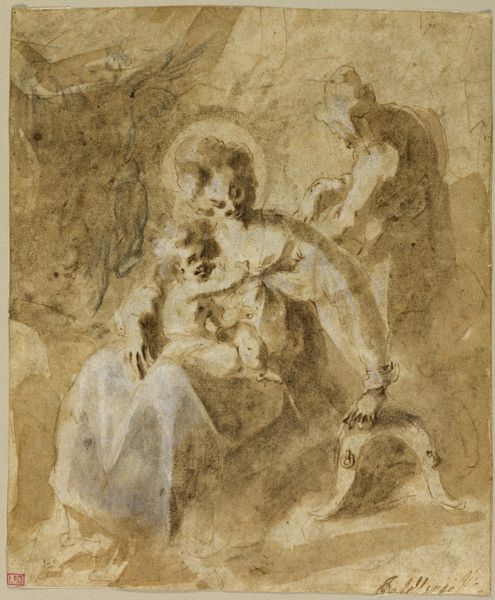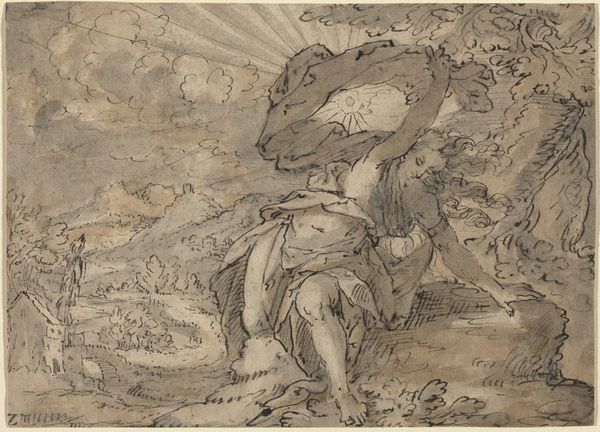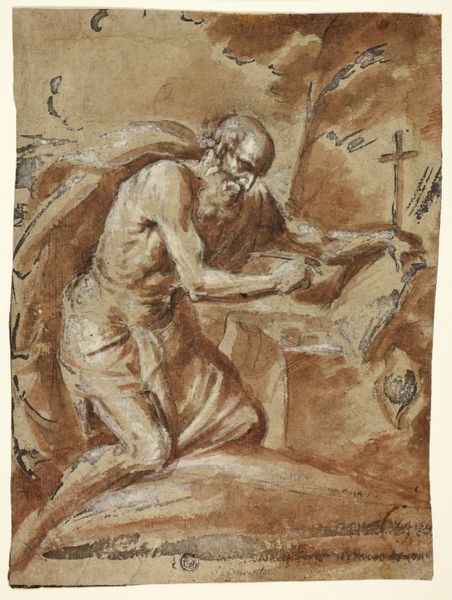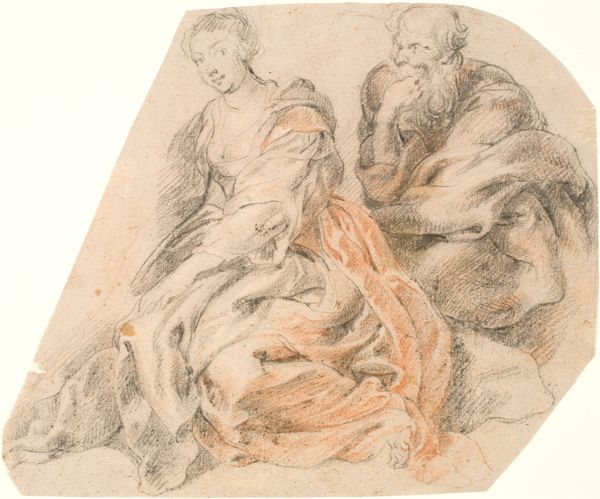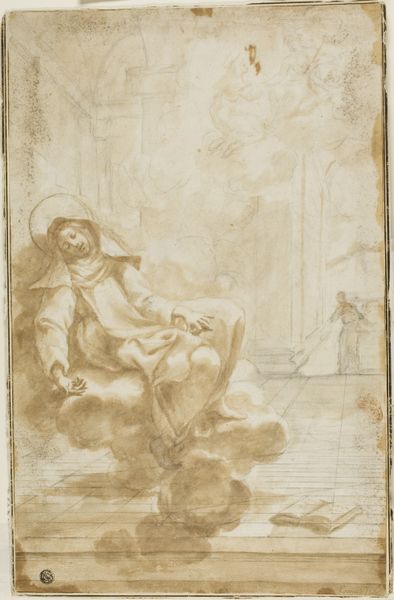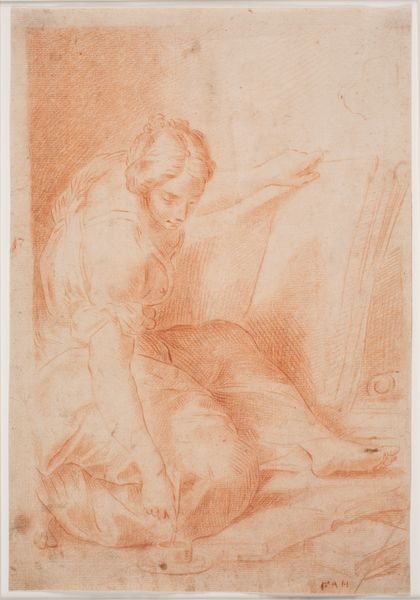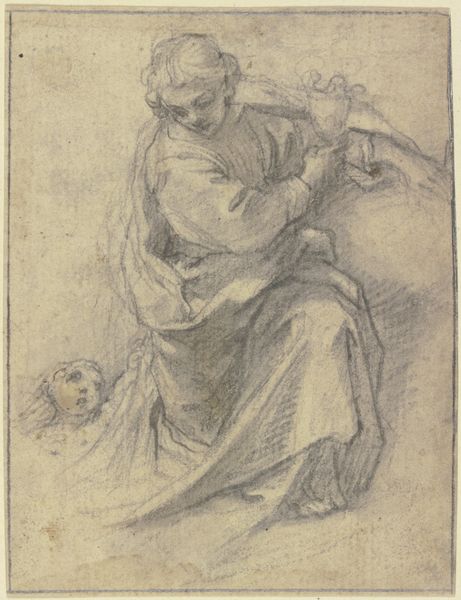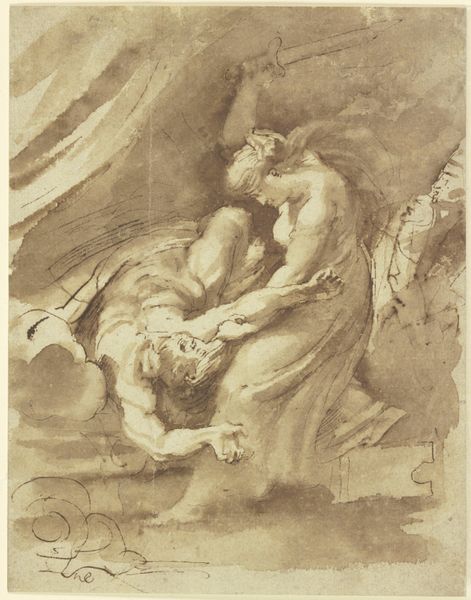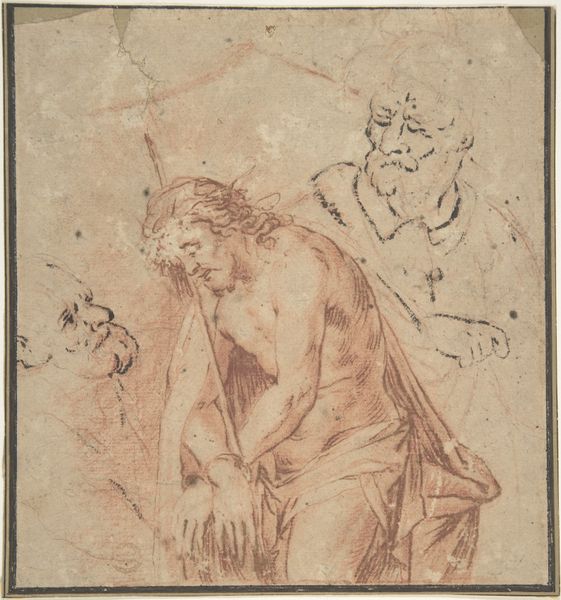
drawing, print, gouache, paper, watercolor, ink, chalk, charcoal, pastel
#
portrait
#
drawing
# print
#
gouache
#
charcoal drawing
#
mannerism
#
figuration
#
paper
#
11_renaissance
#
watercolor
#
ink
#
chalk
#
watercolour illustration
#
charcoal
#
pastel
#
history-painting
#
academic-art
#
italy
Dimensions: 169 × 144 mm
Copyright: Public Domain
Curator: I'm immediately struck by the raw emotion emanating from this piece. The wash of sepia tones and charcoal seems to amplify the somber mood. What do you see? Editor: This is Domenico Mondo’s Penitent Magdalene, rendered with ink, watercolor, gouache, chalk, charcoal and pastel on paper. The process is quite complex and, surprisingly, gives an initial impression of swift execution. Note the artist's dedication to craft—each material layering upon the others. Curator: Right, the composition places Magdalene in a moment of introspection, with the skull as a poignant symbol of mortality and repentance. How do you see that play out, particularly given Mondo’s artistic influences? It’s fascinating how gendered these tropes are too. Editor: Thinking about the materiality further— the skull is not merely a symbol, but an object. Its texture and weight, translated through chalk and charcoal, invite questions of consumption, decay, and the means through which we materially confront death itself. This almost elevates a historically high-art subject using the techniques from traditionally "low" or everyday artistic crafts. Curator: Exactly! We can consider Magdalene's presentation—partially draped, kneeling in this historical painting—within the context of the male gaze and her representation through the ages as both sinful woman and repentant saint. Her suffering becomes aestheticized. What does Mondo do with that tension? How does he position her within these complicated frameworks of religion and sexuality? Editor: It's in these nuanced details. He’s clearly working within existing visual traditions. The choice of materials reflects artistic traditions and a broader context of available goods during that period. Curator: Examining the art with all of the media at Mondo's disposal provides insights into the broader socio-cultural conversations circulating around this subject during the period, in turn speaking volumes about gender, penitence, and power in the late Renaissance period in Italy. Editor: Indeed, and perhaps it gives a sense of intimacy and immediacy often overlooked. I find that material consideration reframes it, revealing a connection to artistic traditions, commerce, and personal experience of loss in making such an artwork. Curator: Looking closely through this intersectional lens deepens our understanding of the histories—social and artistic. Editor: It also encourages awareness about artmaking beyond a conceptual stance. It connects it to daily life through process, tools, and matter itself.
Comments
No comments
Be the first to comment and join the conversation on the ultimate creative platform.

